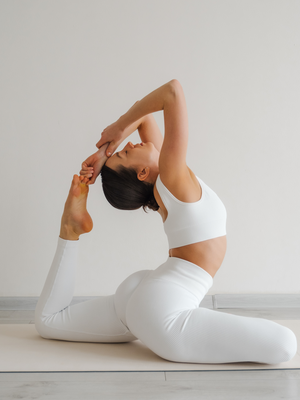

Why Everyone’s Talking About Nerve Flossing
What is nerve flossing?
“Nerve flossing is an evidence-based technique that gently mobilises a nerve within its surrounding tissue,” says Laura Wilson, specialist MSK physiotherapist at Hooke. “It enhances nerve mobility, increases flexibility, reduces nerve tension and alleviates associated pain.”
What are the main benefits of nerve flossing?
“Nerve flossing mobilises a nerve in two directions back and forth, which facilitates smooth movement and allows improved movement of the nerve through muscles and around joints,” says Claire Mills, physiotherapist and founder of Core LDN. “Flossing can help decrease compression around a nerve and can help decrease pain caused by nerves.”
What conditions can nerve flossing help?
“Commonly, nerve flossing is used to alleviate pain from compressed or irritated nerves normally as a result of injury, disease or changes that occurred around a joint or muscles,” says Claire. “Nerve flossing is effective for conditions such as sciatica, carpal tunnel syndrome and thoracic outlet syndrome,” says Laura. “It's also beneficial for individuals experiencing pain or tightness from repetitive movements or prolonged sitting.”
Is there anything else it can do?
Aside from the purely physical benefits, many experts advocate nerve flossing for its ability to work on emotional issues via the channels of physicality. “From a trauma perspective, the body often retains memories of past experiences in the form of somatic sensations and muscular holding patterns,” explains Dr Sarah Jane, chiropractor, counsellor and founder of Spinal Energetics. “Nerve flossing can help to gently unravel these somatic imprints, providing a safe and supportive avenue for processing and releasing unresolved trauma stored within the nervous system.” It’s also a useful tool in helping to release any non-traumatic emotional tension. “By engaging in nerve flossing practices, we create a somatic container for the expression and release of pent-up emotions. As we move through the gentle oscillations of nerve mobilisation, we may find ourselves connecting with hidden emotions and allowing them to dissipate, fostering a sense of liberation and inner peace.”
Can nerve flossing be done without professional supervision?
It can easily be done at home, and you don’t need any equipment to do it. That said, it’s always best to consult a professional before you start any kind of new exercise or fitness regime, and especially in the case of nerve flossing, as there will be specific exercises needed for your condition. It’s also important to get a professional to show you exactly how to do each exercise so you don’t cause yourself an injury. “They can ensure correct diagnosis of symptoms and teach the appropriate technique tailored to your needs,” adds Laura.
How should you start nerve flossing?
“Start slow and gradually increase repetitions,” advises Claire. “Be guided by pain, which should not increase, and keep breathing as you do the exercises. Try to think about keeping the muscles relaxed as you go.”
Anything to be aware of when doing it?
“It is a technique designed to mobilise and ‘glide’ the nerve, not stretch the nerve,” warns Laura, so stop as soon as it starts to feel sore or uncomfortable. You should only be working within a range that’s appropriate for you and your needs, so it’s important to listen to your body.
How often can you do it?
“Start with five minutes per day and gradually increase to twice daily. Results may appear after a few sessions, but long-term consistency is key for nerve adaptation and restoration,” says Laura.
Can you overdo it?
As with anything physical, it’s easy to overdo it and irritate the problem you’re supposed to be addressing. “Nerves are extremely sensitive, and they can get irritated quickly,” warns Claire. Take things slowly, and follow the advice of your trainer or physiotherapist to make sure you don’t exacerbate your original symptoms.
How soon should you start to feel results?
“Results vary among individuals, with some noticing improvements within a few sessions, while others may require several weeks,” says Laura. “Factors such as symptom duration, technique correctness and consistency influence the timeframe.” She adds that nerve flossing, while valuable, is most effective when used as part of a comprehensive physiotherapy programme. “Often nerve flossing in isolation will not resolve symptoms,” adds Claire.
Visit Hooke; Core LDN; Spinal Energetics
DISCLAIMER: Features published by SheerLuxe are not intended to treat, diagnose, cure or prevent any disease. Always seek the advice of your GP or another qualified healthcare provider for any questions you have regarding a medical condition, and before undertaking any diet, exercise or other health-related programme.
DISCLAIMER: We endeavour to always credit the correct original source of every image we use. If you think a credit may be incorrect, please contact us at info@sheerluxe.com.